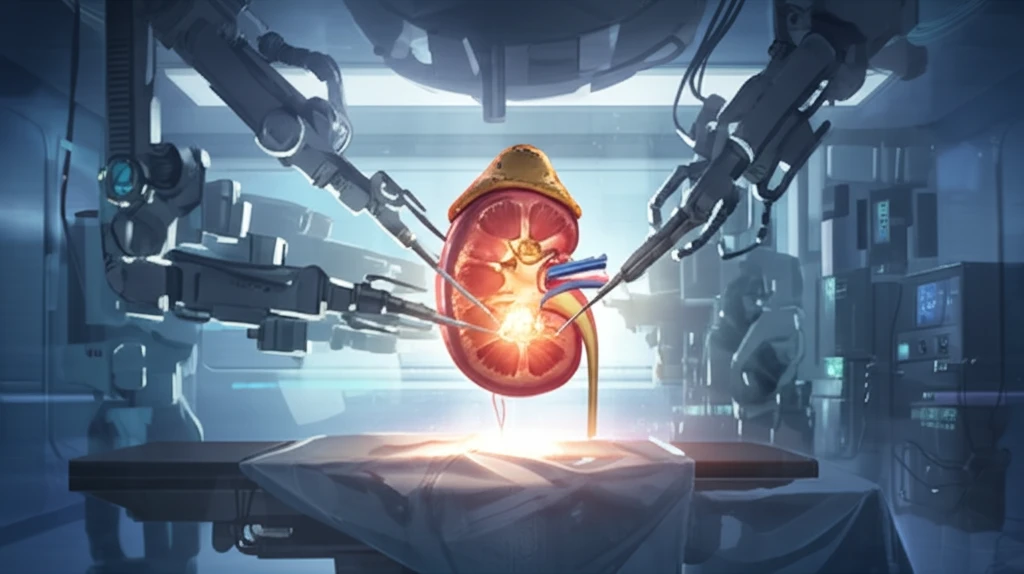
Kidney-Saving Surgery: How Laparoscopic Partial Nephrectomy Can Help You
"Explore how minimally invasive kidney surgery preserves function and improves recovery."
Imagine facing a diagnosis that threatens one of your kidneys. For years, the standard treatment for kidney tumors meant removing the entire organ—a radical nephrectomy. While effective at eliminating the tumor, this approach could lead to significant long-term health issues, including chronic kidney disease and increased risk of cardiovascular problems.
Fortunately, medical advancements have brought a kidney-sparing alternative to the forefront: laparoscopic partial nephrectomy (LPN). This minimally invasive surgical technique allows surgeons to remove only the tumor while preserving the healthy surrounding kidney tissue. The benefits are substantial, offering patients a chance to maintain kidney function and reduce the risk of related health complications.
This article will explore the world of laparoscopic partial nephrectomy. We'll break down the procedure, discuss who might benefit, and examine the latest research on its effectiveness. Whether you're a patient facing a kidney tumor diagnosis or simply interested in learning about cutting-edge medical options, this guide will provide valuable insights.
What is Laparoscopic Partial Nephrectomy (LPN)?

Laparoscopic partial nephrectomy is a minimally invasive surgical procedure used to remove kidney tumors while preserving as much of the healthy kidney tissue as possible. Unlike a radical nephrectomy, where the entire kidney is removed, LPN targets only the affected area. This approach is particularly beneficial for patients with small kidney tumors (typically less than 4 cm) or those who are at risk of developing kidney failure.
- Minimally Invasive: Smaller incisions lead to less pain and scarring.
- Kidney-Sparing: Preserves healthy kidney tissue to maintain function.
- Precise Tumor Removal: Allows for accurate removal of the tumor with minimal damage to surrounding tissue.
- Faster Recovery: Shorter hospital stays and quicker return to normal activities.
Is Laparoscopic Partial Nephrectomy Right for You?
If you've been diagnosed with a kidney tumor, it's essential to discuss all treatment options with your doctor. Laparoscopic partial nephrectomy offers a compelling alternative to radical nephrectomy, particularly for smaller tumors. By preserving kidney function and minimizing recovery time, LPN can help you maintain a better quality of life. Don't hesitate to ask your urologist if LPN is the right choice for your specific situation. Explore available treatment and focus on the treatment with your healthcare provider.
